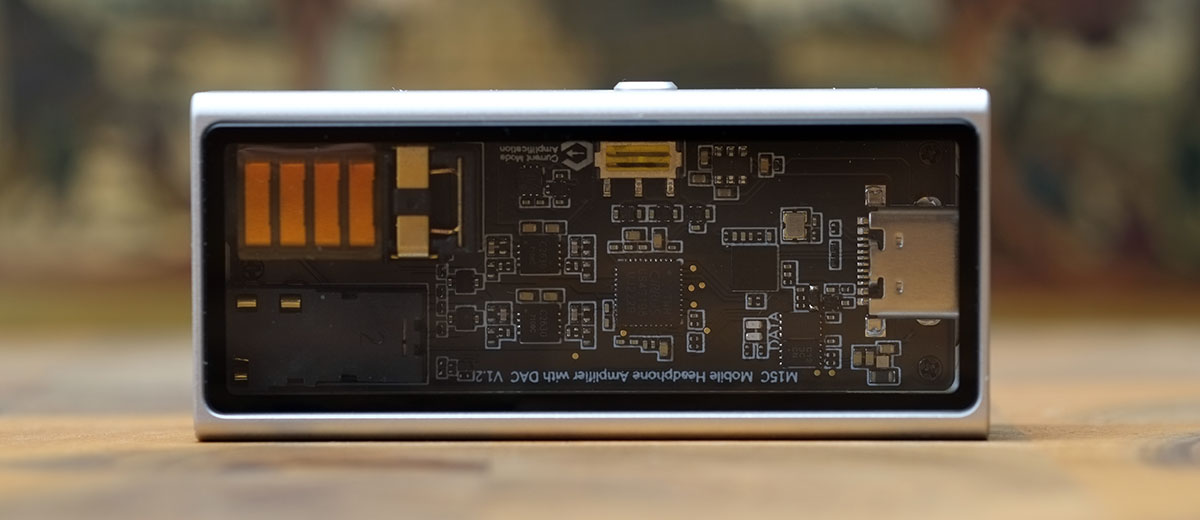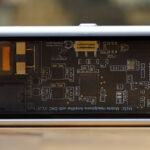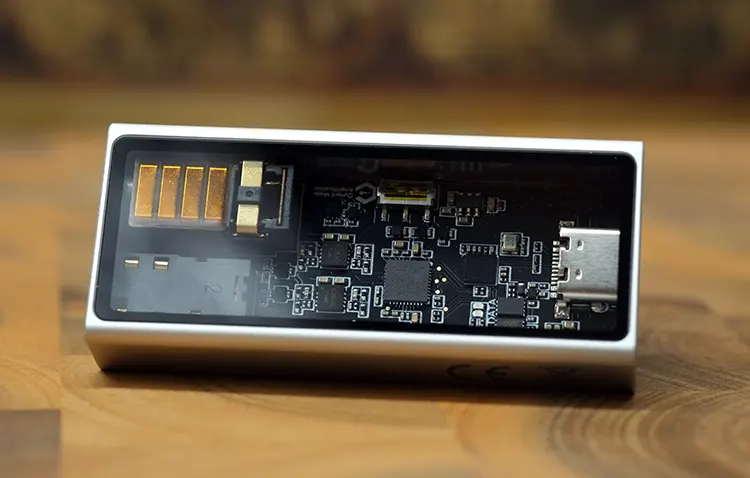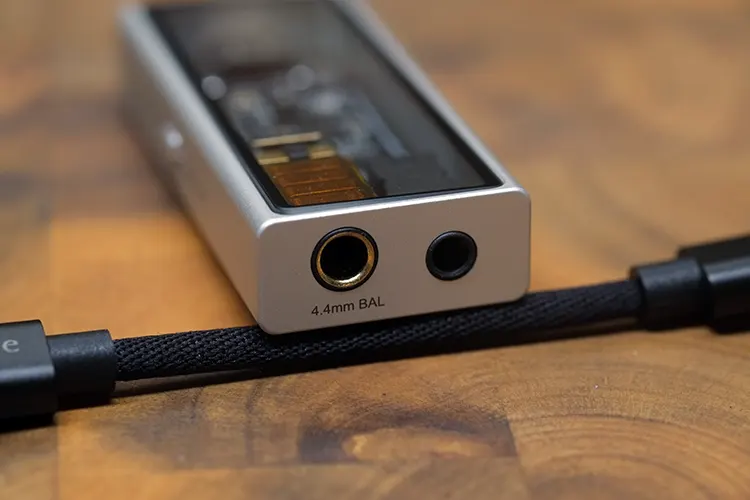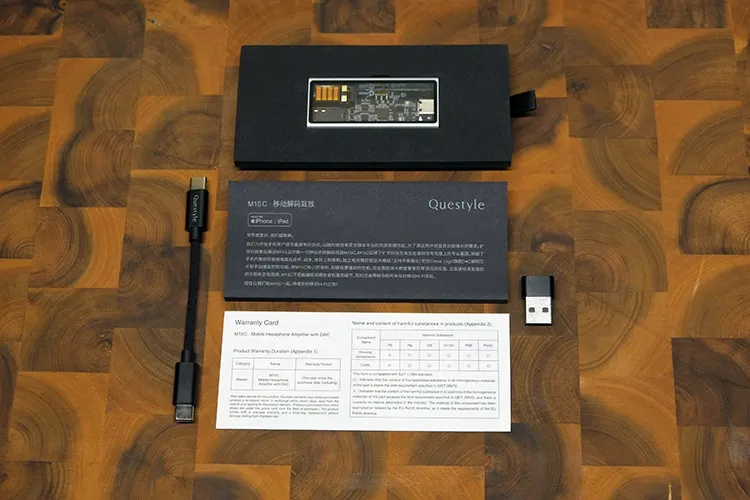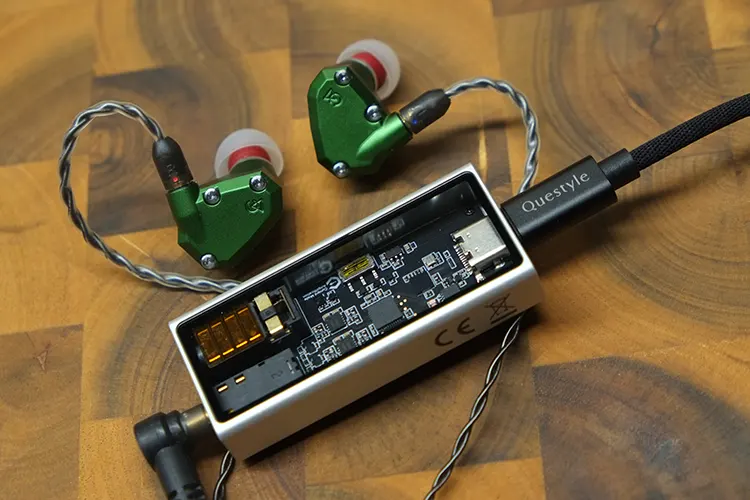In today’s post, Thomas reviews the Questyle M15C, an updated version of their popular PCM 384kHz/32bit balanced-designed dongle DAC. Its SRP is $199, but it is currently priced at $129 in the Questyle online store.
Disclaimer: This sample was sent in return for my honest opinion. Headfonics is an independent website that does not have any affiliate links. I thank Questyle for this opportunity.
Click here to read more on other Questyle products previously reviewed on Headfonics.
This article follows our current scoring guidelines which you can read in more detail here.
Today I am checking out the recently released Questyle M15C dongle DAC. The M15C slots into Questyle’s lineup between the M12i and M15i with the original M15 now discontinued.
Following Questyle’s unique design language with a solid aluminum shell and transparent face showing off the board inside, the M15C is a visually striking piece of equipment. Its visual appeal is backed by strong sonic performance and a useful feature set.
While it has limited usefulness with sensitive earphones, the M15C has otherwise proven to be a pleasant daily driver. If you’re looking for a performant dongle DAC with a unique look, the M15C might be just the ticket.
Features
Dual outputs are present on the M15C. It contains a 3.5mm single-ended port alongside a 4.4mm balanced output.
Inside the M15C and visible through the transparent viewing window are LED sampling rate status indicators. One LED will light for sampling rates less than or equal to 48kHz, while two LEDs will light for sampling rates greater than 48kHz.
On one side of the device is a manual gain adjustment switch. This switch allows you to swap between Standard and High gain options, giving the M15Cs output a bit more punch for demanding earphones and headphones.
Adding to the M15C’s strong visual appeal, along with added durability, is a frosted aluminum, CNC-machined outer shell. It makes the device feel more expensive than it is.
Lastly, a high-quality 4.4mm port from Pentaconn has been installed in the M15C. Using parts from such a respected brand instills greater confidence in the longevity of the M15C.
Design
While the M15C takes on a similar shape as most compact, portable DACs with a removable cable, it differs in one key aspect. On the top of the device is a viewing window with a tidy black border that lets you appreciate the clean design of the electronics within.
Beyond that, the rest of the device is frosted CNC-machined aluminum. While there are defined edges, everything is smoothly rounded off leaving no sharp angles.
This sleek design feels good in the hand and reduces the likelihood of the device catching or snagging on a pocket or something else. It also helps make the device feel exceptionally solid and durable.
On either end are the various ports and inputs. Down one side is the gain switch. The switch is easy to find and while it doesn’t slide as smoothly as similar switches, the button is aluminum and snicks into place with a satisfying sound.
While the quality of the materials is great, the fitment and finish of the sample I was provided could be better. Instead of the viewing window being flush with the housing all around, one side is kicked up creating a ridge you can hook your fingernail into, allowing you to remove the panel entirely.
The printing on the rear of the device is also tilted slightly. I would not expect these details to be the norm, but it’s good to know that Questyle isn’t cherry-picking the best examples of the M15C to send to reviewers.
I/O
Questyle’s M15C connects to various devices through the USB-C port located on one end. It supports Android, iOS, Windows, MAC, and others, though you may need to enable your device’s OTG mode for full functionality.
3.5mm single-ended and 4.4mm balanced output ports are on the other end of the device. A gain switch with options for Standard and High gain is located on one side.
And that’s it for the I/O. The M15C is a sleek device.
Packaging & Accessories
Questyle’s packaging for the M15C is compact and simple. On the front of the matte black box is a wireframe-style image of the M15C with the usual branding and model information.
Flipping to the rear you find a small handful of specifications and features, such as the application of a Cirrus Logic CS43198 DAC chip and that a TOREX semiconductor is handling power management. The side notes that the M15C was designed for use with iDevices.
Sliding out the interior like a drawer via a small ribbon tab, you are provided a product manual in numerous languages and a warranty card.
If you’re a heavy metal aficionado, you’ll be happy to know that the housing and cable contain lead in amounts that exceed the EU’s RoHS directive, but they’ve been given an exemption or relaxed qualifications to meet so there’s nothing to worry about.
Below the paperwork is the M15C tucked tightly into a foam insert with other inclusions below. In all you get:
- M15C DAC
- Type-C to Type-C USB cable
- Type-C to Type-A adapter
- Manual and warranty card
While the lack of even a basic protective case is a disappointing omission, you can buy a leather one separately for around $25. The quality of the cloth-coated Type-C cable is quite high and is certainly better than the basic rubber-sheathed cables included with competing devices.
Sound Impressions
Testing was done with the M15C paired with a Huawei P40 and ASUS ROG Ally Z1 Extreme. I listened through the Campfire Audio Andromeda 2020 (single-ended), I/O Audio VOLARE (balanced), and the Astrotec Phoenix (balanced).
Summary
Because of the Cirrus CS43198 chipset application, I expected the M15C to have a detailed but warm-leaning signature in line with other products I’ve tried featuring the same chip. That’s exactly what we get.
Signature
Questyle’s M15C has a warm-leaning signature that sounds smooth and plenty detailed. Its end-to-end extension is excellent, and I never found it to hold back flagship products capable of reaching the lowest lows and highest of highs.
The M15C’s signature has a natural timbre and can properly power demanding products. When pairing it with the Astrotec Phoenix, I found it kept the treble presentation clean and defined, an area where the Phoenix can struggle when paired with an unsuitable DAC.
Shimmering highs are represented and with rapid drivers like planars and electrostats, ensure their attack and decay qualities are maintained. Splashiness is also suitably reined in which can be an issue with the Phoenix if not driven properly.
The M15C does not push the midrange forward and has a more moderate weighting and warmth compared to similar products. This is where I find the M15C differing most from other devices featuring the same chipset.
This presentation gives more edge and better clarity to vocals and other instruments and effects playing in this range. It sounds best with male vocals and instruments with a cooler tonality.
The M15C’s low-end warmth gives the DAC’s presentation a punchy presence on bass notes with its emphasis being moderate enough to influence the headphones’ default sound.
This subtle shift helps maintain a low-end presence when using bass-lite earphones in public since the low end is usually the first thing affected by outside noise bleeding in.
Questyle’s M15C also does a fantastic job with texturing. It does nothing to smooth out grungy bass notes and the sort of micro-details that give music a dynamic edge.
Staging & Dynamics
The M15C’s staging performance is excellent thanks to the wide bass floor and spacious default vocal positioning.
These two traits make earphones with moderate staging, like the Astrotec Volans or Campfire Audio Polaris, sound more dynamic and open than they do through most other products.
Earphones with a great stage already, like the Campfire Audio Andromeda 2020, the effect is less pronounced but still notable. Overall, the M15C sounds open and spacious and makes the products it powers sound the same.
This sensation is helped by above-average layering and instrument separation qualities, especially in the midrange. The moderate weighting leaves plenty of space between track elements, while the depth it provides enhances the dynamics.
Click on page 2 below for my recommended pairings and selected comparisons.




